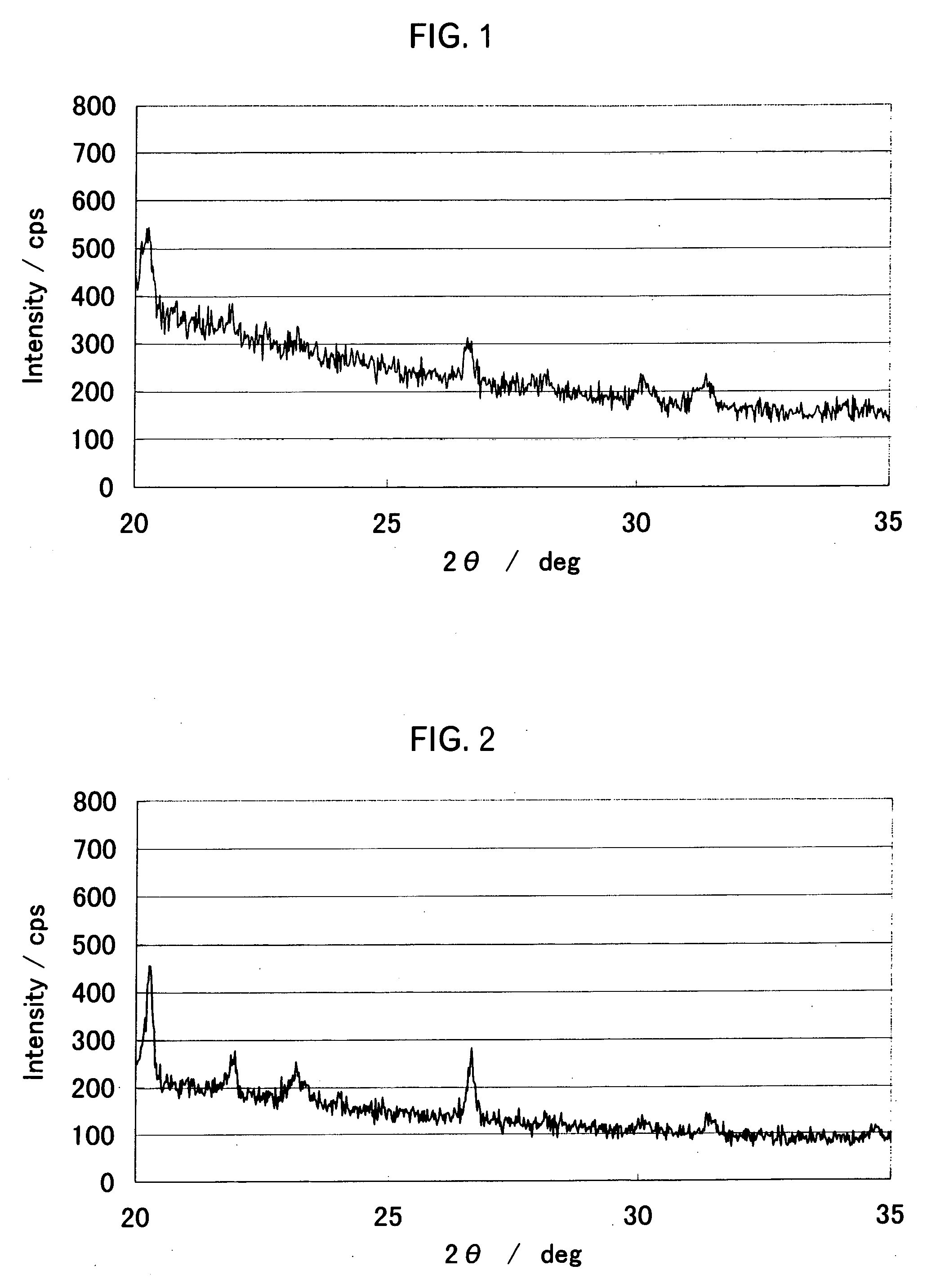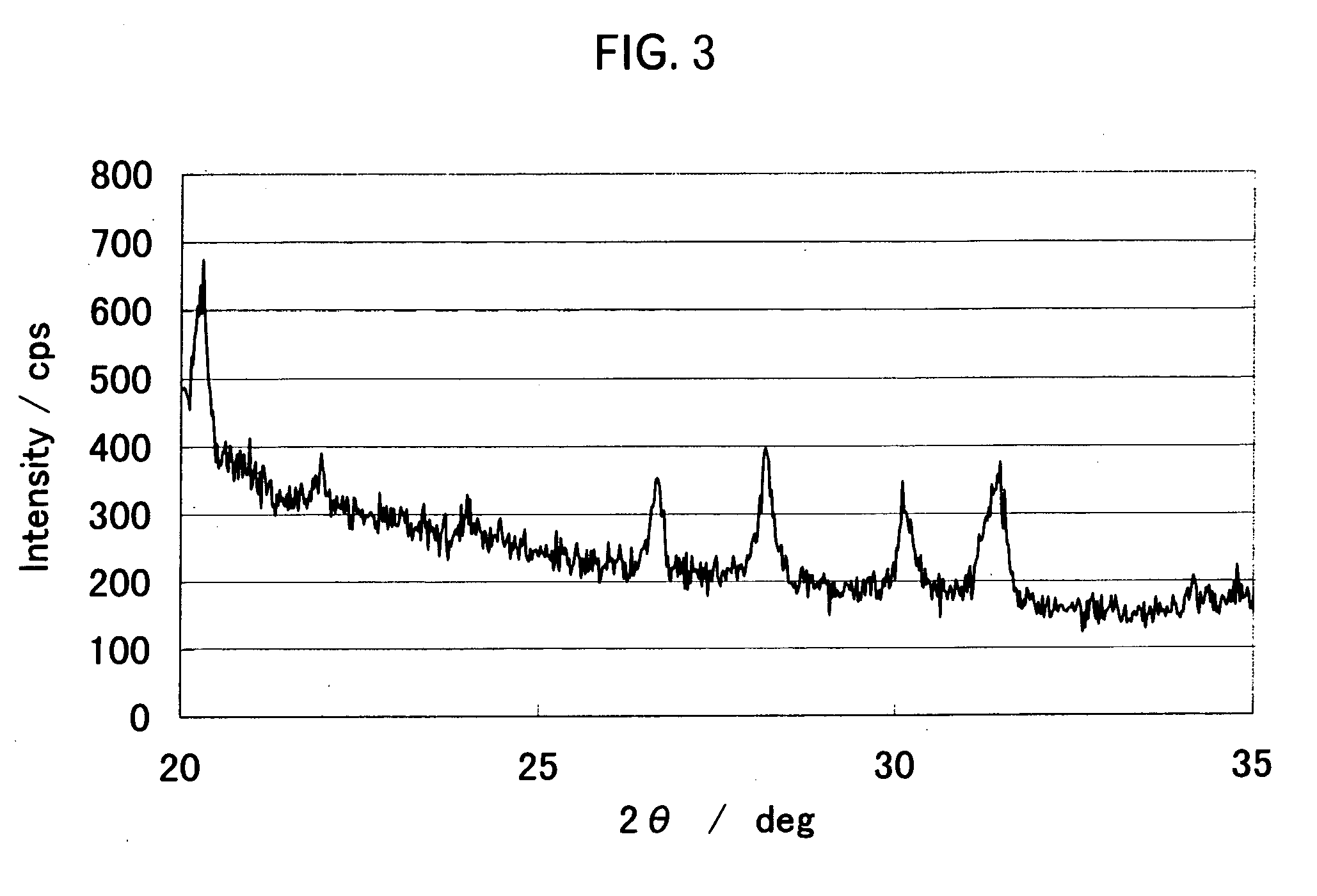Positive electrode material for lithium secondary battery and process for producing the same
a lithium secondary battery and positive electrode technology, applied in the direction of non-aqueous electrolyte cells, cell components, electrochemical generators, etc., can solve the problems of difficult to secure satisfactory cycle properties, violent deterioration of lithiumsub>2/sub>, and significant damage to cycle properties, so as to improve charge-discharge cycle durability, improve cell performance, and improve the effect of charge-discharge cycle durability
- Summary
- Abstract
- Description
- Claims
- Application Information
AI Technical Summary
Benefits of technology
Problems solved by technology
Method used
Image
Examples
example 1
[0062] Predetermined quantities of cobalt oxyhydroxide powder having an average particle diameter D50 of 10.2 μm, wherein 50 or more primary particles were coagulated to form a secondary particle, lithium carbonate powder, aluminum hydroxide powder, and zirconium oxide power were mixed. These four kinds of powders were dry-mixed, and then, fired at 950° C. for 14 hours in the atmosphere. As a result of wet-dissolving the powder after firing, and measuring the content of cobalt, aluminum, zirconium and lithium by ICP and atomic absorption spectrometry, the composition of the powder was LiCo0.99Al0.005Zr0.005O2.
[0063] The specific surface area of the powder after firing (positive electrode active material powder) measured using the nitrogen adsorption method of the powder was 0.37 m2 / g, and the average particle diameter D50 measured using a laser scattering type particle-size distribution analyzer was 11.8 μm. As a result of XPS analysis of the powder surface after firing, a strong s...
example 2
[0071] A positive electrode active material was synthesized in the same manner as in Example 1 except that magnesium hydroxide was used in lieu of using aluminum hydroxide, and composition analyses, property measurements, and cell performance tests were carried out. As a result thereof, the composition was LiCo0.99Mg0.005Zr0.005O2.
[0072] The specific surface area of the powder after firing measured using the nitrogen adsorption method of the powder was 0.32 m2 / g, and the average particle diameter D50 measured using a laser scattering type particle-size distribution analyzer was 12.5 μm. Magnesium and zirconium were present on the surface. The initial discharge capacity at 25° C., 2.75 to 4.5 V, and a discharge rate of 0.5 C was 192.0 mAh / g, and the average voltage was 4.009 V. The capacity retention after 50 times of charge-discharge cycles was 92.0%.
[0073] The X-ray diffraction spectrum of the fired powder was obtained by a high-sensitivity X-ray diffractometry using Cu—K α ray, ...
example 3
[0075] A positive electrode active material was synthesized in the same manner as in Example 1 except that predetermined quantities of cobalt oxyhydroxide powder having an average particle diameter D50 of 10.7 μm wherein 50 or more primary particles were coagulated to form a secondary particle, lithium carbonate powder, aluminum hydroxide powder, zirconium oxide powder, and lithium fluoride powder were mixed; and composition analyses, property measurements, and cell performance tests were carried out. As a result thereof, the composition was LiCo0.99Al0.005Zr0.005O1.9924F0.0076.
[0076] The specific surface area of the powder after firing measured using the nitrogen adsorption method of the powder was 0.34 m2 / g, and the average particle diameter D50 measured using a laser scattering type particle-size distribution analyzer was 12.8 μm. Aluminum, zirconium and fluorine were present on the surface. As a result of observation through SEM, 30 or more primary particles were coagulated to ...
PUM
 Login to View More
Login to View More Abstract
Description
Claims
Application Information
 Login to View More
Login to View More - R&D
- Intellectual Property
- Life Sciences
- Materials
- Tech Scout
- Unparalleled Data Quality
- Higher Quality Content
- 60% Fewer Hallucinations
Browse by: Latest US Patents, China's latest patents, Technical Efficacy Thesaurus, Application Domain, Technology Topic, Popular Technical Reports.
© 2025 PatSnap. All rights reserved.Legal|Privacy policy|Modern Slavery Act Transparency Statement|Sitemap|About US| Contact US: help@patsnap.com


